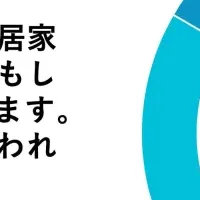
TAGRISSO's Growth Outlook: Shaping the Future of Oncology Treatment
TAGRISSO's Growth Outlook: Shaping the Future of Oncology Treatment
TAGRISSO, also known as osimertinib, has established itself as a crucial player in the treatment landscape for non-small cell lung cancer (NSCLC) driven by specific mutations in the EGFR gene. Developed by AstraZeneca, this medication has gained considerable traction because of its potent efficacy and favorable market dynamics, making it the drug of choice for both first-line and subsequent therapies.
Understanding TAGRISSO
TAGRISSO functions as a kinase inhibitor that irreversibly targets specific mutant forms of the EGFR gene, particularly the T790M mutation, L858R mutation, and exon 19 deletions. This specificity allows TAGRISSO to inhibit cancer cell proliferation at lower concentrations compared to wild-type EGFR, which translates into enhanced therapeutic outcomes. The broad approval for its use in various cancer stages has ignited its market potential tremendously.
Approved first in the United States in 2015, TAGRISSO has not only been used as a subsequent therapy after initial treatment failures but also as a preventative measure against recurrence post-surgery. Its ability to penetrate the blood-brain barrier effectively addresses a significant concern—brain metastases in lung cancer patients, strengthening its overall clinical profile.
Market Dynamics and Growth Potential
The market for EGFR-mutated NSCLC treatment continues to expand, with a valuation that reached approximately USD 4 billion in 2023 across the seven major markets (7MM) including the US, EU, and Japan. TAGRISSO leads this expansion, propelled by an increasing rate of lung cancer diagnoses attributed to rising environmental risk factors and genetic predispositions. Furthermore, its efficacy, particularly in treating patients who develop resistance to first-generation therapies, constructs a solid pathway for sustained growth.
1. Clinical Evidence: Multiple clinical trials have consistently highlighted TAGRISSO's superiority in terms of progression-free survival (PFS) and overall survival (OS). For example, the results from the LAURA Phase III study confirmed its effectiveness for patients with unresectable EGFR-mutated lung cancer.
2. Regulatory Approvals: Recent months have seen several significant approvals for TAGRISSO, expanding its use across various demographics and stages of lung cancer, including the adjuvant setting which allows for its use post-surgery to minimize recurrence risks.
3. Targeted Approaches: The ongoing research into combination therapies continues to enrich TAGRISSO's market positioning. Whether in tandem with chemotherapy agents or new emerging TKIs, this strategy is vital for addressing resistance mechanisms that challenge treatment efficacy.
Competitive Landscape
Despite its stronghold, TAGRISSO faces competition. New drugs like Patritumab deruxtecan and Zipalertinib are on the horizon, presenting aspiring alternatives for oncologists when addressing the nuances of EGFR mutations. The emergence of resistance patterns such as MET amplification poses challenges that AstraZeneca aims to approach through innovative combination treatments.
Concluding Thoughts
Overall, TAGRISSO is well-poised to maintain its market leadership. The drug's unique clinical profile and broadening indications ensure that it remains a favored choice within oncological care. Continual investments in research, coupled with AstraZeneca's strategizing for overcoming resistance pathways, herald a potent future for TAGRISSO in the oncology domain.
As the cancer landscape becomes increasingly intricate, the integration of personalized medicine approaches will be paramount in maximizing outcomes for patients struggling with this dire disease. The journey of TAGRISSO illustrates not only the advances in medication but the ongoing fight against lung cancer on a global scale. For anyone engaged in the health and wellness sectors, following TAGRISSO's trajectory provides essential insights into the evolving strategies that shape oncology treatments.
Topics Health)










【About Using Articles】
You can freely use the title and article content by linking to the page where the article is posted.
※ Images cannot be used.
【About Links】
Links are free to use.